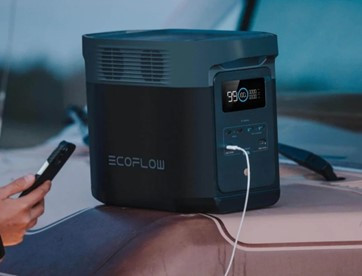
Portable power stations are indispensable for providing backup energy when needed, whether for outdoor activities, during power outages, or in off-grid settings. These devices ensure that your essential devices, such as smartphones, laptops, or small appliances, stay powered when the regular power supply is unavailable. However, to get the most out of your portable power station and extend its lifespan, it is crucial to follow proper usage and storage guidelines. Neglecting safety precautions can lead to reduced efficiency or even damage to the unit. In this guide, we’ll walk you through the best practices for safely using and storing your portable power station, helping you maximize its effectiveness.
How to Safely Use Your Portable Power Station
Understanding Power Limits
Each portable power station is designed with specific power limits, meaning they can only supply a certain amount of energy at any given time. Overloading the power station can cause overheating or even damage to internal components. It’s essential to know the maximum wattage your power station can provide and ensure the devices connected to it do not exceed this limit. Always check the product specifications for wattage output and match them with the power consumption needs of your devices. This will not only ensure safe operation but will also help maintain the long-term performance of your power station.
Safety Tips for Charging
When charging your portable power station, safety is a top priority. Always use the charger and cables provided by the manufacturer, as third-party accessories can lead to compatibility issues or even cause damage to the unit. It’s important to charge your device in a dry, well-ventilated area, away from flammable materials. Also, avoid charging it in extreme temperatures—high heat can damage the battery, while extremely cold temperatures may reduce charging efficiency. Never leave the power station unattended while charging, especially during the first few uses, to ensure the charging process remains safe and efficient.
How to Store Your Portable Power Station Safely
Maintaining Battery Health During Storage
- Tobacco seed sales decline 30%
- Tobacco seed sales decline 30%
- GB Holdings set to meet demand
- Fertiliser price increase, a result of global shocks
Keep Reading
When storing your portable power station for an extended period, it’s crucial to keep the battery in good health. The ideal charge level for long-term storage is around 50%, as fully charging or fully discharging the battery can both shorten its lifespan. It’s also important to store the unit in a cool, dry location, away from direct sunlight, humidity, and extreme temperatures. These factors can cause the battery to degrade more quickly. Periodically check the battery's charge level during storage and recharge it if it falls below 20% to prevent potential damage to the battery cells.

Protecting Your Power Station From Damage
Proper storage is essential for protecting your portable power station from accidental damage. Store the device in a padded case or a secure location to avoid physical impact or scratches. Keep it away from heavy objects that might apply pressure or cause deformation. Additionally, ensure that the power station is kept away from any liquids, chemicals, or moisture that could damage the internal components. Avoid storing it in places where children might access it, and make sure it is out of reach of potential hazards like sharp objects or substances that could spill and cause harm to the unit.
Troubleshooting Common Issues
If your portable power station isn’t working properly, it’s important to troubleshoot before seeking professional assistance. Start by checking all connections and cables to ensure they’re securely plugged in. Verify that the power station is turned on and the battery has a sufficient charge. If it’s still not functioning, consult the user manual for common troubleshooting steps. Dust or debris buildup in the vents can impede airflow, so make sure to clean them regularly. If issues persist, it may be necessary to contact customer support for more specific troubleshooting or potential repairs.
Conclusion
By following the correct safety and storage guidelines, you can ensure that your portable power station continues to function effectively for many years. Whether it’s understanding the power limits, using the right charging methods, or maintaining battery health, each step plays a crucial role in prolonging the life of your device. Proper storage is just as important—keeping it in the right conditions and protecting it from damage ensures your power station is ready whenever you need it. These practices will not only protect your investment but also ensure that your portable power station serves as a reliable source of power for all your essential devices.










